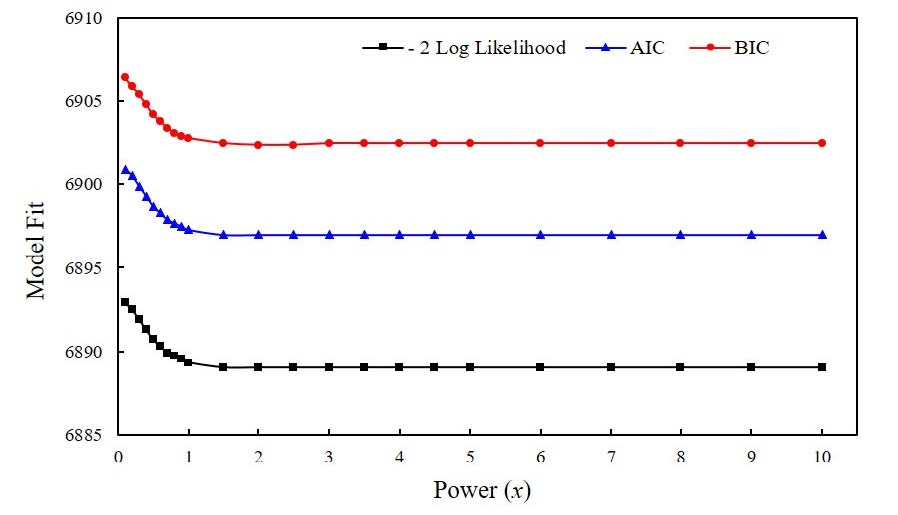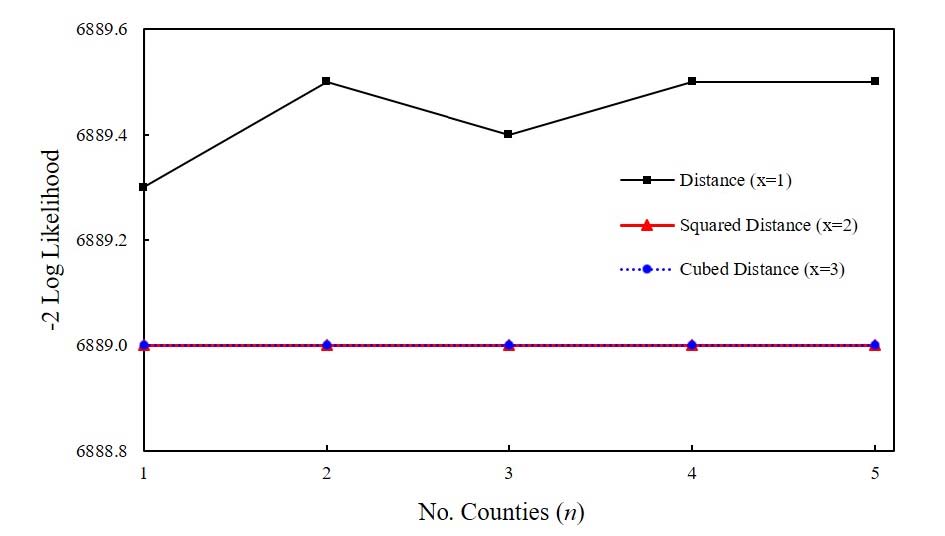(References marked with an asterisk indicate studies included in the meta-analysis)
1. Aghezzaf, E. (2005). Capacity planning and warehouse location in supply chains with uncertain demands.
Journal of the Operational Research Society
, 56(4), 453-462. DOI:
10.1057/palgrave.jors.2601834.

2. Baade, R. A. (1996). Stadium subsidies make little economic sense for cities, a rejoinder.
Journal of Urban Affairs
, 18(1), 33-37. DOI:
10.1111/j.1467-9906.1996.tb00364.x.

3. Baimbridge, M., Cameron, S., et al, & Dawson, P. (1995). Satellite broadcasting and match attendance: The case of Rugby League.
Applied Economics Letters
, 2(10), 343-346. DOI:
10.1080/758518985.

4. Baimbridge, M., Cameron, S., et al, & Dawson, P. (1996). Satellite television and the demand for football: A whole new ball game?
Scottish Journal of Political Economy
, 43(3), 317-333. DOI:
10.1111/j.1467-9485.1996.tb00848.x.

5. Borland, J., et al, & Macdonald, R. (2003). Demand for sport.
Oxford Review of Economic Policy
, 19(4), 478-502.

6. Campbell, J. R., et al, & Hopenhayn, H. A. (2005). Market size matters.
The Journal of Industrial Economics
, 53(1), 1-25.

7. Carmichael, F., Millington, J., et al, & Simmons, R. (1999). Elasticity of demand for Rugby League attendance and the impact of BskyB.
Applied Economics Letters
, 6(12), 797-800. DOI:
10.1080/135048599352196.

8. Cheng, E. W., Li, H., et al, & Yu, L. (2005). The analytic network process (ANP) approach to location selection: A shopping mall illustration.
Construction Innovation
, 5(2), 83-97. DOI:
10.1108/14714170510815195.

9. Coates, D., et al, & Humphreys, B. R. (2007). Ticket prices, concessions and attendance at professional sporting events.
International Journal of Sport Finance
, 2(3), 161-170.
10. Current, J., Daskin, M., et al, Schilling, D. (2004, Discrete network location models. In. In: Drezner Z., , &, Hamacher H. W. (Eds.). In:
Facility location applications and theory
2nd ed.(pp. 81. -118). New York. Springer.
11. Current, J. R., et al, & Schilling, D. A. (1987). Elimination of source A and B errors in p‐median location problems.
Geographical Analysis
, 19(2), 95-110. DOI:
10.1111/j.1538-4632.1987.tb00118.x.

12. DeSchriver, T. D., et al, & Jensen, P. E. (2002). Determinants of spectator attendance at NCAA Division II football contests.
Journal of Sport Management
, 16, 311-330. DOI:
10.1123/jsm.16.4.311.

13. Ferreira, M., et al, & Bravo, G. (2007). A multilevel model analysis of professional soccer attendance in Chile 1990-2002.
International Journal of Sports Marketing and Sponsorship
, 8(3), 49-66. DOI:
10.1108/ijsms-08-03-2007-b006.

15. Francis, R. L., Lowe, T. J., et al, & Tamir, A. (2004). Demand point aggregation analysis for a class of constrained location models: A penalty function approach.
IIE Transactions
, 36(7), 601-609. DOI:
10.1080/07408170490278210.

16. Gratton, C., Shibli, S., et al, & Coleman, R. (2005). Sport and economic regeneration in cities.
Urban Studies
, 42(5), 985-999. DOI:
10.1080/00420980500107045.

17. Hakimi, S. L. (1964). Optimum locations of switching centers and the absolute centers and medians of a graph.
Operations Research
, 12(3), 450-459. DOI:
10.1287/opre.12.3.450.

18. Hakimi, S. L. (1965). Optimum distribution of switching centers in a communication network and some related graph theoretic problems.
Operations Research
, 13(3), 462-475. DOI:
10.1287/opre.13.3.462.

19. Hamacher, H. W., et al, & Nickel, S. (1998). Classification of location models.
Location Science
, 6(1-4), 229-242. DOI:
10.1016/s0966-8349(98)00053-9.

20. Hansen, H., et al, & Gauthier, R. (1989). Factors affecting attendance at professional sporting events.
Journal of Sport Management
, 3, 15-32.
21. Howard, D. R., et al, Crompton, J. L. (2014,
Financing sport
. 3rd ed.Morgantown, WV Fitness Information Technology.
23. Kemper, H. C., De Vente, W., Van Mechelen, W., et al, & Twisk, J. W. R. (2001). Adolescent motor skill and performance: Is physical activity in adolescence related to adult physical fitness?
American Journal of Human Biology
, 13(2), 180-189. DOI:
10.1002/1520-6300(200102/03)13:2<180::aid-ajhb1027>3.0.co;2-r.

26. Lemke, R. J., Leonard, M., et al, & Tlhokwane, K. (2010). Estimating attendance at Major League Baseball games for the 2007 season.
Journal of Sports Economics
, 11, 316-348. DOI:
10.1177/1527002509337212.

27. Lim, N., et al, & Pedersen, P. M. (2018). Examining determinants of sport event attendance: A multilevel analysis of a Major League Baseball season.
Journal of Global Sport Management
, DOI:
10.1080/24704067.2018.1537675.

28. . McDonald, M., et al, & Rascher, D. A. (2000). Does bat day make cents? The effect of promotions on the demand for Major League Baseball.
Journal of Sport Management
, 14, 8-27. DOI:
10.1123/jsm.14.1.8.

29. McEvoy, C. D., Nagel, M. S., DeSchriver, T. D., et al, & Brown, M. T. (2005). Facility age and attendance in Major League Baseball.
Journal of Sport Management
, 8(1), 19-41. DOI:
10.1016/s1441-3523(05)70031-0.

30. MLB attendance report. (2017). ESPN. Retrieved from http://espn.go.com/mlb/attendance. MLB attendance report. 2017;
ESPN Retrieved from
http://espn.go.com/mlb/attendance.
31. Nelson, A. C. (2002). Locating Major League stadiums where they can make a difference empirical analysis with implications for all major public venues.
Public Works Management & Policy
, 7(2), 98-114.


33. Perry, K. (2001). Professional sports attendance as a proxy for new stadium spillover benefits.
The Park Place Economist
, 9, 62-70.
34. ReVelle, C. S., et al, & Eiselt, H. A. (2005). Location analysis: A synthesis and survey.
European Journal of Operational Research
, 165(1), 1-19. DOI:
10.1016/j.ejor.2003.11.032.

35. ReVelle, C. S., Eiselt, H. A., et al, & Daskin, M. S. (2008). A bibliography for some fundamental problem categories in discrete location science.
European Journal of Operational Research
, 184(3), 817-848. DOI:
10.1016/j.ejor.2006.12.044.

36. Rivers, D. H., et al, & DeSchriver, T. D. (2002). Star players, payroll distribution, and Major League Baseball attendance.
Sport Marketing Quarterly
, 11(3), 164-173.
37. Schofield, J. A. (1983). Performance and attendance at professional team sports.
Journal of Sport Behavior
, 6, 196-206.
38. Serra, D., et al, & Marianov, V. (1998). The p-median problem in a changing network: The case of Barcelona.
Location Science
, 6, 383-394. DOI:
10.1016/s0966-8349(98)00049-7.

39. Siegfried, J. J., et al, & Eisenberg, J. D. (1980). The demand for minor league baseball.
Atlantic Economic Journal
, 8(2), 59-69. DOI:
10.1007/bf02299864.

40. Simmons, R. (1996). The demand for English league football: A club-level analysis.
Applied Economics
, 28(2), 139-155. DOI:
10.1080/000368496328777.

41. Snyder, L. V., et al, & Daskin, M. S. (2005). Reliability models for facility location: The expected failure cost case.
Transportation Science
, 39(3), 400-416. DOI:
10.1287/trsc.1040.0107.

43. Tu, C. C. (2005). How does a new sports stadium affect housing values? The case of FedEx field.
Land Economics
, 81(3), 379-395. DOI:
10.3368/le.81.3.379.

47. Vanreusel, B., Renson, R., Beunen, G., Claessens, A. L., Lefevre, J., Lysens, R., et al, & Eynde, B. V. (1997). A longitudinal study of youth sport participation and adherence to sport in adulthood.
International Review for the Sociology of Sport
, 32, 373-387. DOI:
10.1177/101269097032004003.

48. Whitson, D., et al, & Horne, J. (2006). Underestimated costs and overestimated benefits? Comparing the outcomes of sports mega‐events in Canada and Japan.
The Sociological Review
, 54(2), 71-89. DOI:
10.1111/j.1467-954x.2006.00654.x.

49. Winfree, J. A., McCluskey, J. J., Mittelhammer, R. C., et al, & Fort, R. (2004). Location and attendance in major league baseball.
Applied Economics
, 36(19), 2117-2124.






 PDF Links
PDF Links PubReader
PubReader Full text via DOI
Full text via DOI Download Citation
Download Citation Print
Print





